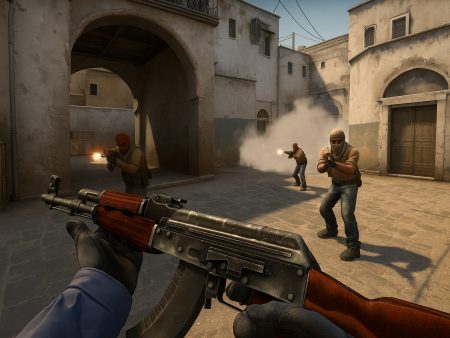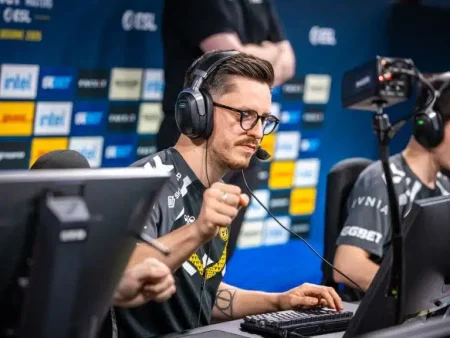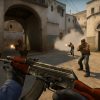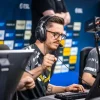Discover the best warm-up routines for CS2 ranked matches with expert tips, pro player strategies, and personalized drills to boost your aim, reaction time, and consistency before every competitive game.
Whether you’re trying to climb out of Silver or you’re grinding through Global Elite, one thing’s for sure—warming up before jumping into a ranked match in Counter-Strike 2 (CS2) can make a massive difference. You can have the sharpest aim in your lobby, but if your hands are cold and your crosshair is floating all over the place, you’re likely to lose duels you should’ve won. This guide dives deep into the best warm-up routines for CS2 ranked matches, giving you a clear roadmap to sharpen your mechanics, boost your consistency, and hit those one taps like a pro.
Let’s break it down step-by-step so you’re mentally and mechanically ready before you click “Start Match.”
Why Warming Up Matters in CS2
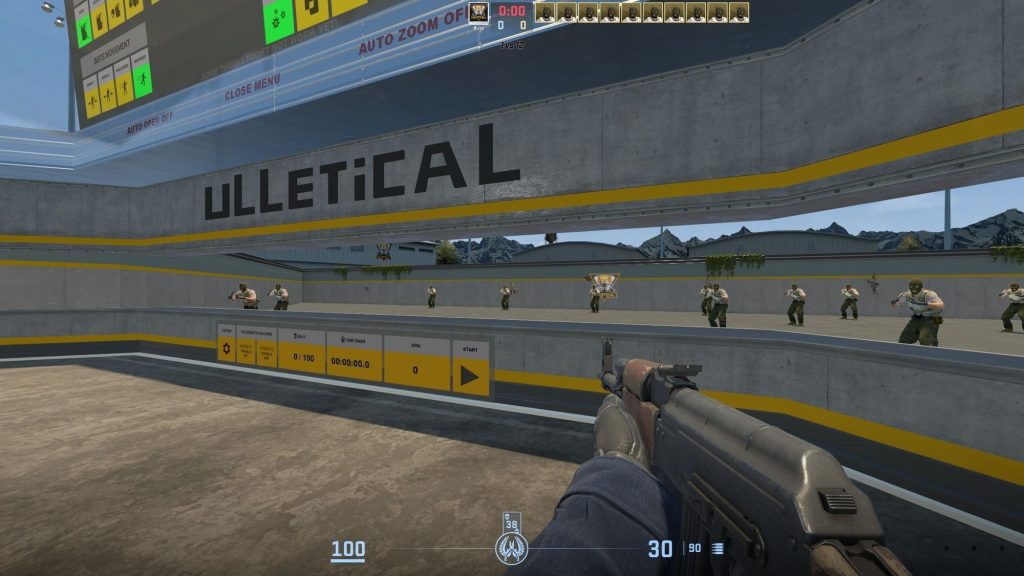
Warming up isn’t just a ritual—it’s a necessity. If you’ve ever jumped into a ranked game without warming up and found yourself whiffing easy shots or getting out-aimed at every angle, then you’ve already learned this the hard way. But let’s break down why warming up is actually scientifically and strategically important in CS2.
Mental Focus and Reaction Time
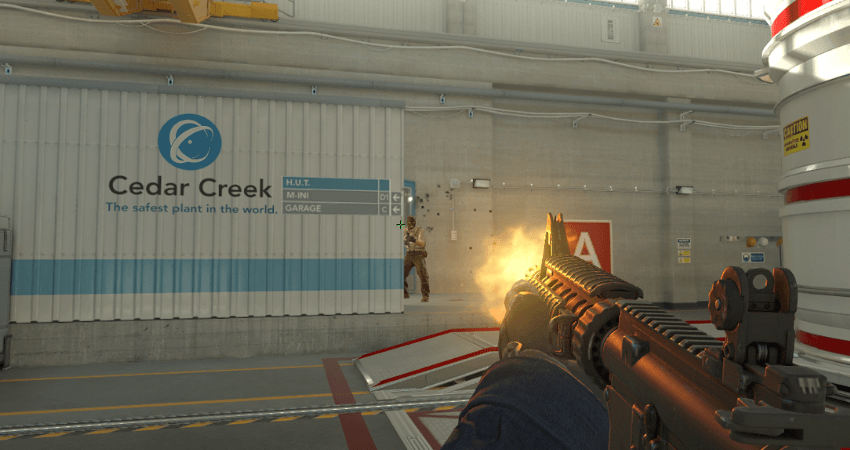
CS2 is as much a mental game as it is a mechanical one. When your brain is cold, you’re more likely to second-guess angles, overpeek without checking, and generally just make poor decisions. A proper warm-up routine gives your brain time to:
- Switch into “game mode”
- Sharpen focus and awareness
- Improve reaction speed for those crucial split-second duels
Think of it like stretching before a sprint—you’re prepping your reflexes to act without hesitation. Aim isn’t just about your hand—it’s also your mind processing enemies’ positions, peeking patterns, and adjusting on the fly. A good warm-up syncs your visual processing and physical reaction time.
Muscle Memory and Crosshair Control
If you’ve ever watched pro players land pixel-perfect headshots, that’s not luck—it’s muscle memory. By doing drills before a match, you’re reinforcing neural pathways in your brain that help your hand move the mouse without thinking. This leads to:
- Better crosshair placement
- Faster flicks and target tracking
- More control during stressful spray transfers
Your hand remembers what your brain repeats. And that’s why warm-ups should always include deliberate practice, not mindless shooting.
Understanding Your Role and Playstyle
Not every player warms up the same way—nor should they. Your role in the team (and your preferred playstyle) should shape how you approach your warm-up. Whether you’re a sharp entry fragger, a calm and collected AWPer, or the team’s utility god, each position needs a specific focus.
Entry Fragger Warm-Up Focus
If you’re the first one diving into sites, your warm-up should be all about:
- Flicks and reaction shots: Entry fraggers are all about being faster than the opponent.
- Pre-aiming common angles: Practice muscle memory for those classic peeking spots on Mirage, Inferno, and Overpass.
- Movement drills: You’ll be clearing corners under fire, so build muscle memory for jiggle peeking and wide swinging.
Your goal is to win those 50/50 duels with confidence—being the tip of the spear demands lightning-fast reflexes and perfect crosshair placement.
AWP Warm-Up Specifics
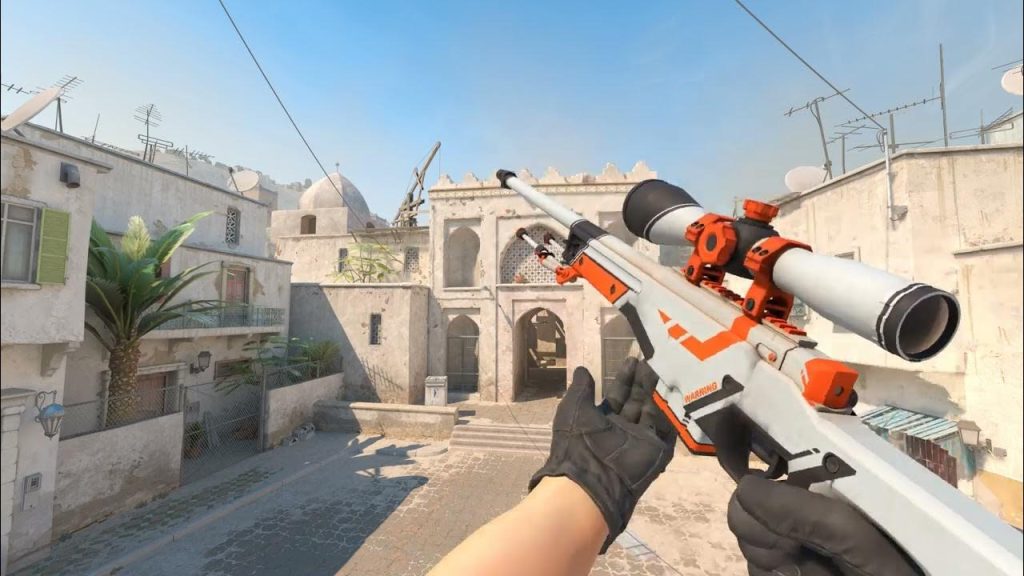
AWPers live and die by the flick. Your warm-up should include:
- Fast flick drills to both sides: Practice one-tap flicks at mid to long ranges.
- Quick scoping and no-scoping mechanics: Make sure your muscle memory is dialed in.
- Holding angles and fast repositioning: Snap to spots and work on mobility after every shot.
AWPing is about patience and precision. You don’t need to spam bullets—you need to make every shot count.
Support and Utility Practice
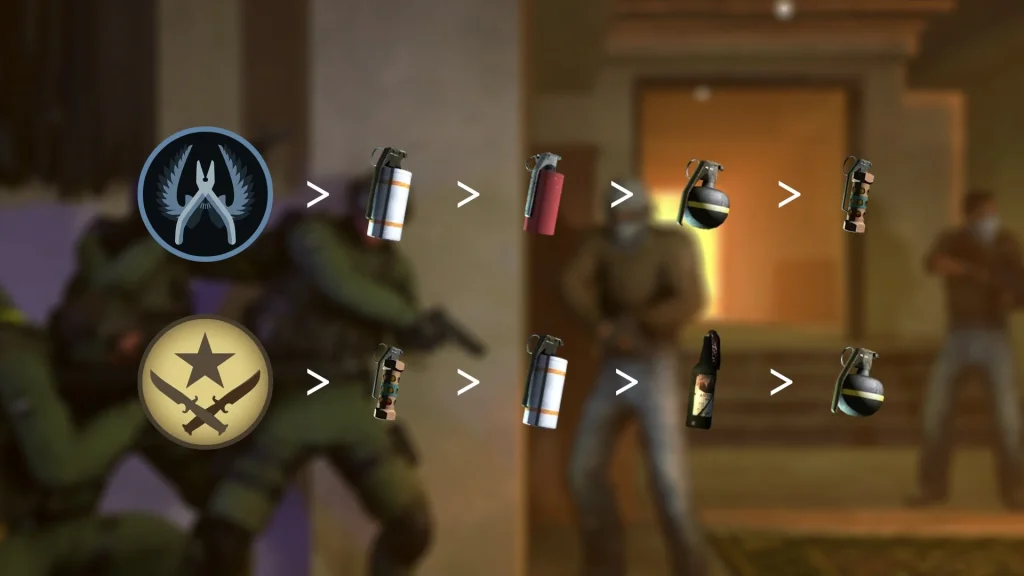
Support players may not be taking every duel, but your warm-up matters too. Focus on:
- Nade lineups: Practice smoke, flash, and molly lineups on your preferred maps.
- Crosshair placement drills: Even as a support, you’ll take duels. Don’t neglect aim.
- Communication warm-ups: Get used to calling utility and trades while under pressure.
Being a support doesn’t mean low impact. A perfectly timed flash can win rounds, and your aim still needs to be sharp when you’re cleaning up or defending.
Essential Tools and Maps for Effective Warm-Ups
To warm up like a pro, you need the right tools. Thankfully, the CS2 community offers some fantastic workshop maps and third-party resources to help you build precision, speed, and confidence.
Best Workshop Maps for Aim Training
If you’re still using Dust2 bots to warm up, you’re doing it wrong. Here are a few community maps you need in your rotation:
- Aim Botz – Training
- Perfect for target switching and flick shots
- Customize bot behavior, distance, and movement
- training_aim_csgo2
- A legacy map that still works great in CS2
- Excellent for speed shooting and visual reflexes
- Yprac Maps (Mirage, Inferno, Overpass, etc.)
- Practice nades, angles, crosshair placement for each map
- Ideal for role-specific warm-ups
- FAST AIM/REFLEX MAP
- Improves close-range flicks and counter-strafe timing
- Great for entry fraggers or aggressive riflers
These maps simulate real-game scenarios, letting you work on everything from flicks to peeking to smoke throws.
Aim Trainers vs. In-Game Practice
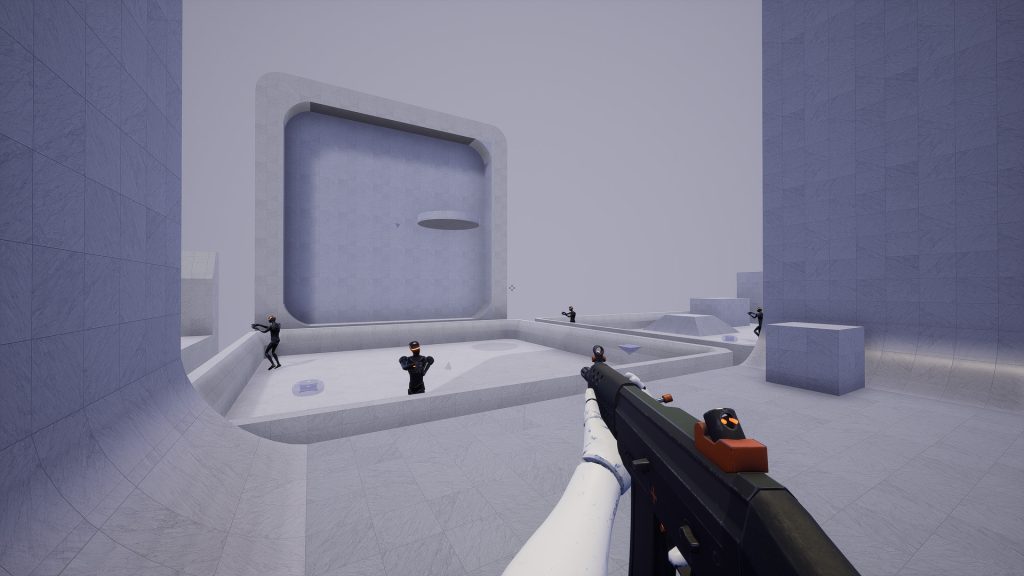
Some players also use external aim trainers like Kovaak’s, Aim Lab, or Aimtastic. While these are solid tools for building baseline aim skills, nothing beats warming up inside CS2 for real-game muscle memory.
- Use Aim Trainers if you’re working on:
- Raw flick accuracy
- Hand-eye coordination
- Tracking long-term aim growth
- Use CS2 Maps for:
- Spray control
- Crosshair placement
- Peeking and angle clearing
Best practice? Combine both. Start with an external aim trainer, then switch to in-game maps for a full warm-up.
The Ultimate 30-Minute Warm-Up Routine
Let’s break down the perfect 30-minute warm-up routine for CS2 players. This structure gets you mechanically ready without draining your energy before you even queue.
First 10 Minutes: Aim and Tracking Drills
Start with Aim Botz or Kovaak’s to get your flicks warmed up. Focus on:
- Head-level target switching
- Short burst fire instead of full auto
- Tracking moving targets across your screen
Don’t just mindlessly shoot—treat every bot like an actual opponent. Practice control and speed at the same time.
Next 10 Minutes: Recoil Control and Spray Practice
This is where you lock in your spray consistency. You can have the best flick in the world, but if your spray is wild and undisciplined, you’ll lose longer duels. Here’s how to dial in:
- Use a map like Recoil Master – Spray Training.
- Focus on the AK-47, M4A1-S/M4A4, and Galil/FAMAS spray patterns.
- Try spraying at different ranges—close, mid, and long distance.
Pay attention to how far your bullets stray when you’re spraying. Don’t just hold mouse1—control your movement, reset between bursts, and practice the full 30-bullet pattern until your muscle memory kicks in.
Tips for this part of the routine:
- Shoot standing and crouching to mimic in-game adjustments.
- Move left and right while spraying to simulate duels.
- Include some spray transfers—go from one bot to the next with control.
It’s not about spraying faster—it’s about spraying smarter.
Final 10 Minutes: Movement and Crosshair Placement
Now that your hands are loose and your aim is on point, the last segment should reinforce positioning, angle clearing, and crosshair placement—one of the most underrated parts of aim.
Use Yprac maps for this. Here’s what to do:
- Practice entry paths on maps like Mirage, Inferno, or Ancient.
- Clear angles systematically while keeping your crosshair glued to head height.
- Include movement drills like jiggle peeks, counter-strafing, and wide swings.
This final phase simulates what you’ll actually do in ranked—entry, pre-fire, peek, and reposition. Focus on smooth, deliberate movement and avoid jumping around like a deathmatch monkey.
You want to enter the match with your hands calibrated for:
- Holding angles with precision
- Peeking confidently
- Clearing corners like a beast
By the end of this 30-minute session, you’ll feel snappy, warmed-up, and ready to lock in for ranked.
Pre-Match Mental and Physical Prep
Warming up isn’t just about clicking heads—it’s also about preparing your body and mind. This is where most players mess up. They load into DM with cold hands, sit in terrible posture, and queue up distracted. Let’s fix that.
Reducing Nerves and Improving Focus
Feeling jittery before a match? That’s normal—especially in higher ELO or Faceit queues. Here’s how to calm the nerves:
- Breathe deeply: Take 5 deep breaths in through the nose, out through the mouth.
- Visualize success: Imagine yourself hitting clean headshots and winning key rounds.
- Mute distractions: Turn off music or background noise when queuing.
Your brain needs to switch into focus mode. Too many players alt-tab until the match loads, then scramble to wake up mentally. Don’t be that guy. Instead:
- Use the queue time to stretch your fingers
- Review callouts or map strats
- Do a last-minute flick test or dry peek drill
Proper Posture and Ergonomics for Gaming
We’ve all slouched in our chairs and wondered why our back hurts after 3 games. Don’t underestimate the power of proper posture:
- Sit upright with shoulders relaxed.
- Keep your monitor at eye level to reduce neck strain.
- Place your mousepad so your wrist moves freely, not crammed against your desk edge.
Here’s an ergonomic checklist:
| Component | Best Practice |
|---|---|
| Chair | Supports lower back, height adjustable |
| Desk Height | Elbows at 90 degrees |
| Monitor | Eyes aligned with top third of screen |
| Mouse Grip | Natural hand position, no strain |
And remember—cold hands = slow hands. Use a hand warmer or rub your hands before the match. Small habits like this keep your reaction time sharp when it counts.
Drills for Improving Aim Consistency
Now we’re getting into elite territory. The difference between a good warm-up and a great one is focusing on consistency over hype. You want repeatable drills that stabilize your mechanics—not just frag out in DM.
Static Target Flick Shots
Start simple—flick to static targets. Use Aim Botz or Yprac Aim Arena to set up immobile heads. The goal?
- Land headshots only
- One-tap, then reset
- No spray, no panic—pure precision
Do this for 5 minutes straight, adjusting between close and far bots. Don’t focus on speed yet—hit accuracy first, then build speed.
Drill tip:
Put a time limit on each flick. Train your brain to react under time pressure, like a real peek in ranked.
Dynamic Moving Targets
Now add complexity: moving targets. These mimic peeking enemies or strafing duelists.
Use:
- Fast Aim Reflex Training map
- Aim Lab scenarios with strafing bots
Start with slow bots and gradually increase speed. This teaches you:
- Micro-adjustments mid-flick
- Better timing for tracking and shooting
- Focus during chaotic moments
The trick here is not to chase the bot—lead your aim slightly, like you’re intercepting their movement.
Strafing and Counter-Strafing Practice
One of the biggest reasons players whiff is poor counter-strafing. If you shoot while moving, your bullet spread explodes. So practice this:
- Use Yprac or Deathmatch servers
- Strafe left, stop, shoot. Strafe right, stop, shoot.
- Focus on clean resets and shot timing
Mix it up:
- Tap-shoot while counter-strafing
- Spray and adjust during movement
- Crouch peek after strafing
It’s about building rhythm. When your body feels the timing, you’ll naturally shoot with better accuracy mid-fight.
Custom Warm-Up Routines by Pro Players
Want to warm up like the best? Here’s a sneak peek at how top CS2 pros get in the zone before a big match.
S1mple’s Warm-Up Breakdown
Oleksandr “S1mple” Kostyliev isn’t just talented—he’s methodical. His warm-up routine includes:
- 30 mins of Aim Botz headshot-only
- 15 mins of flick training on custom maps
- 15–30 mins of Deathmatch (headshots only, AK or Deagle)
- AWP training if he’s playing sniper that match
He focuses on efficiency, accuracy, and discipline—never spraying wildly or wasting time. S1mple believes in warming up every time, no matter how many games he plays.
NiKo’s Aim Routine
Nikola “NiKo” Kovač is known for his rifle dominance. His warm-up includes:
- 20 mins of Yprac Aim Trainer
- Recoil pattern drills for AK and M4
- Crosshair placement runs on Mirage and Inferno
- 10 mins of headshot-only DM
NiKo doesn’t just shoot bots—he works on clearing common angles and maintaining his peek advantage timing.
Zywoo’s Pre-Game Habits
Zywoo is more of a relaxed player. His warm-up focuses on:
- Short, intense 15–20 min Aim Botz sessions
- Calm DM gameplay—he avoids rushing
- Mental visualization and positive mindset
Zywoo also says he avoids over-warming, preferring to enter games fresh, not fatigued. His goal? Quality over quantity in every click.
How to Avoid Burnout Before a Ranked Match
Warm-ups are essential, but there’s a fine line between being prepared and being overcooked. If you grind too hard before a match, you might start your ranked session mentally fatigued and mechanically sloppy. Let’s talk about how to stay sharp without overdoing it.
Recognizing Overtraining Symptoms
You might think playing 2 hours of deathmatch before ranked is dedication—but it’s often a one-way ticket to burnout. Here are warning signs you’re warming up too much:
- Decreased aim accuracy after 30–45 minutes
- Mental fog—you’re zoning out instead of zoning in
- Tired hands or fingers
- Irritability or frustration when warming up
If you notice any of these, take a step back. Remember: your warm-up should make you more focused, not drained.
Light vs. Heavy Warm-Ups
Think of warm-ups like workouts: there are light and heavy routines, and you should tailor them to how you feel.
Light Warm-Up (15–20 mins)
- Use when you’ve already played a few games earlier
- Short Aim Botz session
- Few rounds on Yprac or 5v5 deathmatch
- Movement and peek drills
Heavy Warm-Up (30–45 mins)
- Use before your first match of the day or when returning after a break
- Full Aim Botz → Spray Training → Yprac flow
- Recoil control, tracking, and entry path practice
- Optional: 10 min of Aim Lab or Kovaak’s to push limits
Always listen to your body. You’re not a robot. If your hands feel stiff, stretch. If your brain feels foggy, walk away and return later.
Integrating Communication into Warm-Ups
Warm-up isn’t just about your individual mechanics—it’s also a great opportunity to sync with your teammates if you’re playing premade ranked games. The earlier you start talking, the better your synergy when bullets fly.
Mic Checks and Team Synergy
Hop in voice chat during your warm-up session. Do a simple mic check and get everyone engaged early. Even casual talk during warm-up does wonders for:
- Reducing pre-game jitters
- Building team trust
- Breaking the ice for new stacks or pugs
Call out your kills or positions even while warming up. This builds muscle memory for in-game comms and helps the team feel more cohesive.
Practicing Callouts and Map Awareness
If you’re on a 5-stack, consider using warm-up time to go over:
- Site callouts: Run through key angles and locations together.
- Utility lineups: Practice executes and retakes as a group.
- Default setups: Clarify who plays where on CT/T side.
Warming up with comms sharp is like stretching your communication muscles. In clutch moments, you’ll be more likely to call clearly, share info fast, and avoid confusion.
Mistakes to Avoid in Your CS2 Warm-Up
Even if you’ve got the tools and the time, it’s easy to fall into bad habits during warm-ups. Let’s break down the most common mistakes that are holding back your ranked climb.
Wasting Time on Ineffective Drills
Not all warm-up is good warm-up. Shooting AFK bots or walking around aimlessly in deathmatch for 20 minutes doesn’t do much. Avoid:
- Repetitive bot-killing without purpose
- Overusing AWP in warm-up when you’re going rifle in ranked
- Training flicks when you struggle with crosshair placement
Every second of your warm-up should have intent. Train what you actually use. For example, if you rarely AWP, don’t waste 10 minutes warming it up.
Ignoring Crosshair Placement Practice
This is the silent killer of most players’ performance. They think flicks and spray are all that matter—meanwhile, they’re running with their crosshair at the ground or walls.
Fix this by:
- Practicing angles on Yprac maps
- Walking through a map and adjusting to head-level at every spot
- VOD reviewing your own gameplay to spot poor placement habits
Pro tip: Pretend every wall is a head. If your crosshair isn’t where a head could be, you’re throwing away fights.
Conclusion
Your warm-up is your launch pad into every CS2 ranked game. Do it right, and you’ll enter the server feeling sharp, calm, and confident. Skip it—or worse, do it wrong—and you’re handicapping yourself before the first round even begins.
The best warm-up routines:
- Are personalized to your role and style
- Include a mix of aim, movement, and mental focus
- Avoid overtraining and burnout
- Incorporate communication for team-based play
- Target consistency over pure flashiness
You don’t have to copy S1mple or NiKo—but you do need a routine that works for you. Build it, test it, adjust it, and make it part of your pre-game ritual.
So next time you’re about to hop into CS2 ranked—don’t rush. Spend those 30 minutes prepping, and you’ll see the difference round after round.
FAQs
How long should I warm up before a CS2 ranked match?
Ideally, 20–30 minutes is enough for most players. It’s long enough to engage your aim, tracking, and recoil control without fatiguing you before the game.
What’s the best map for aim training in CS2?
Aim Botz remains one of the most reliable maps for warming up raw aim. Combine it with Yprac maps for angle clearing and recoil training for a complete routine.
Should I use an aim trainer like Aim Lab or Kovaak’s?
Yes—but as a supplement. External aim trainers are great for mechanics, but nothing replaces in-game CS2 practice for map familiarity and crosshair placement.
Can I warm up effectively in Deathmatch servers?
Absolutely. Try using HS-only deathmatch servers or FFA servers for high-intensity duels. Make sure you’re focusing on aim technique, not just kill count.
How do I know if I’m over-warming?
If your performance starts dipping, your hand feels tired, or your focus fades, you’re likely overdoing it. Cut your routine shorter and stay sharp instead of overcooked.
